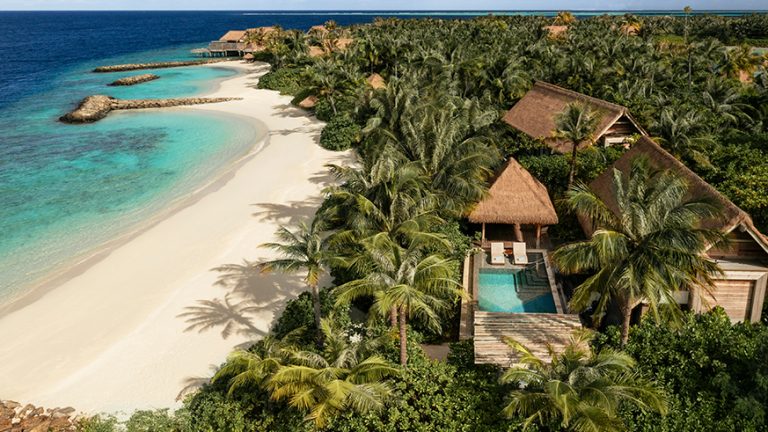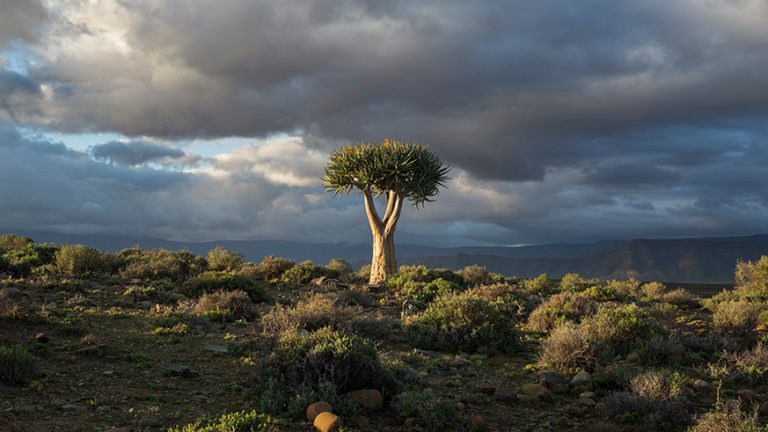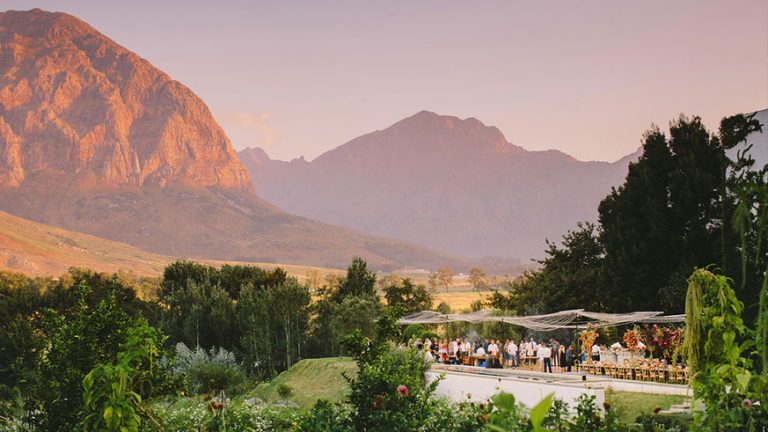
Just as the passengers did in the past, you sleep on the bridge, moving onto the land, the Skukuza rest camp to eat, but unlike the original transporter trains that parked on the bridge, the carriages are luxuriously appointed with full panoramic floor to ceiling windows along one side, and a small balcony, and amazing views over the Sabie River and the crocodiles, hippos, buffaloes, and elephants below. The king-size bed, the bathtub in the window, and the shower all overlook the river. Designed by Megan Hesse and Andrea Kleinloog of HK studio who collaborated with local designers, artists, and craftsmen and finished with organic textures and patterns, the rooms are stunning. Everything is bespoke from the beautifully crafted Batho scatter cushions from Neimil that take inspiration and colour from the Skukuza area. Visual artist Sakhile Cebekhulu’s photographic images of the Sabie river and Selati Bridge, embellished with embroidery, enliven the walls and Bonolo Chepape’s strikingly graphic designed luxurious basso blanket made by SMIT good studio complete the beds. The train, has 24 unique ensuite carriage rooms, a lounge carriage, and a bar with a pool deck with a circular pool overhanging the river. The carriages are reached via a walk along the bridge with individual step.
The reception lobby and the inside / outside restaurant are on land along with another pool deck and a further seven land-based rooms (children are not allowed to stay on the train.) The Selati line construction began in 1892 to transport gold from the Selati goldfields on the Murchison Range to Komatipoort, then on to the port in Lorenzo Marques (Maputo). It was known as the ‘man-a-mile-line’ due to the high mortality rate from malaria and lions. French entrepreneurs Baron Eugene Oppenheim and his brother, Baron Robert Oppenheim, secured the concession to build the line chiefly through bribery and continued to cook the books until they were found out in 1985 and the Selati line scandal bust wide open. Over one million pounds lined the greedy pockets of crooked politicians and businessmen, and 120km of useless track remained. It was over 15 years before construction was picked up again in 1909 and completed in 1912. In 1898, James Stevenson-Hamilton was appointed as the first warden of the Sabie Game Reserve. Stevenson-Hamilton garnered the pseudonym Skukuza, meaning ‘to sweep,’ in Tsonga for his determination to sweep clean the park of poachers and criminals in the area. It was Stevenson-Hamilton who in 1923 suggested that the train park on the bridge allowing guests to disembark, eat and view the game in daylight. Stevenson-Hamilton would regale guests with tales of the reserve he had fought so hard to protect around a bonfire, followed by a banquet before guests returned to their carriages to sleep.
It became the most popular stop on the trip and led to a campaign to decree the reserve a national park. The Kruger National Park was proclaimed in 1926. The Selati Line remained in use until the 1960s, with up to 250 trains a week rumbling through the Kruger Park. The last train rolling through in 1973. And as if we needed more, we had amazing game drives. Our ranger Nelly Mdlovu [meaning elephant in Tsonga, and yes, seriously, his parents called him Nelly Elephant], was delightful; we loved Nelly. So well informed, engaging, calm, and eager to find as many animals as possible for us, which he did most successfully. The morning drives with coffee stops, the evening drives with sundowners were a complete joy. The game vehicles are not allowed off-road in Kruger; however, we saw more wildlife than at the following three safari lodges. In fact, we joked that our ranger had lined them up, as the animals just kept on coming as if on cue…leopard, lions, elephants, wild dogs, giraffe, zebra, vervet monkey, buffalo, wild boar, hyena, impala, kudu, hippo, crocodile. The restoration of the bridge and the train is incredibly done, the design, the thought, the story, the curation. Fantastic food, sunsets, people—Kruger Shalati is utterly fabulous in every way. I LOVE it! This venture will reign supreme for a long time to come. Oh, and there’s a very cool shop!
Just up from the train, the Kruger Station 3638, named after the old steam locomotive built-in 1949, and parked in the station. We didn’t discover 3638 until we were leaving. It replaces the Selati Station Grill house that opened up in the 1980s. It’s open to the public and has been brilliantly designed with a restaurant and coffee bars. However, we didn’t feel we’d missed out; we loved our stay in wonderfully relative seclusion at Shalati, away from the rest of the world.
Find out more about Kruger Shalati, click here.
All images and story written by Anji Connell ACID+Anji Connell Interior Design.
www.anjiconnellinteriordesign.com
@anjiconnell_acidplus







